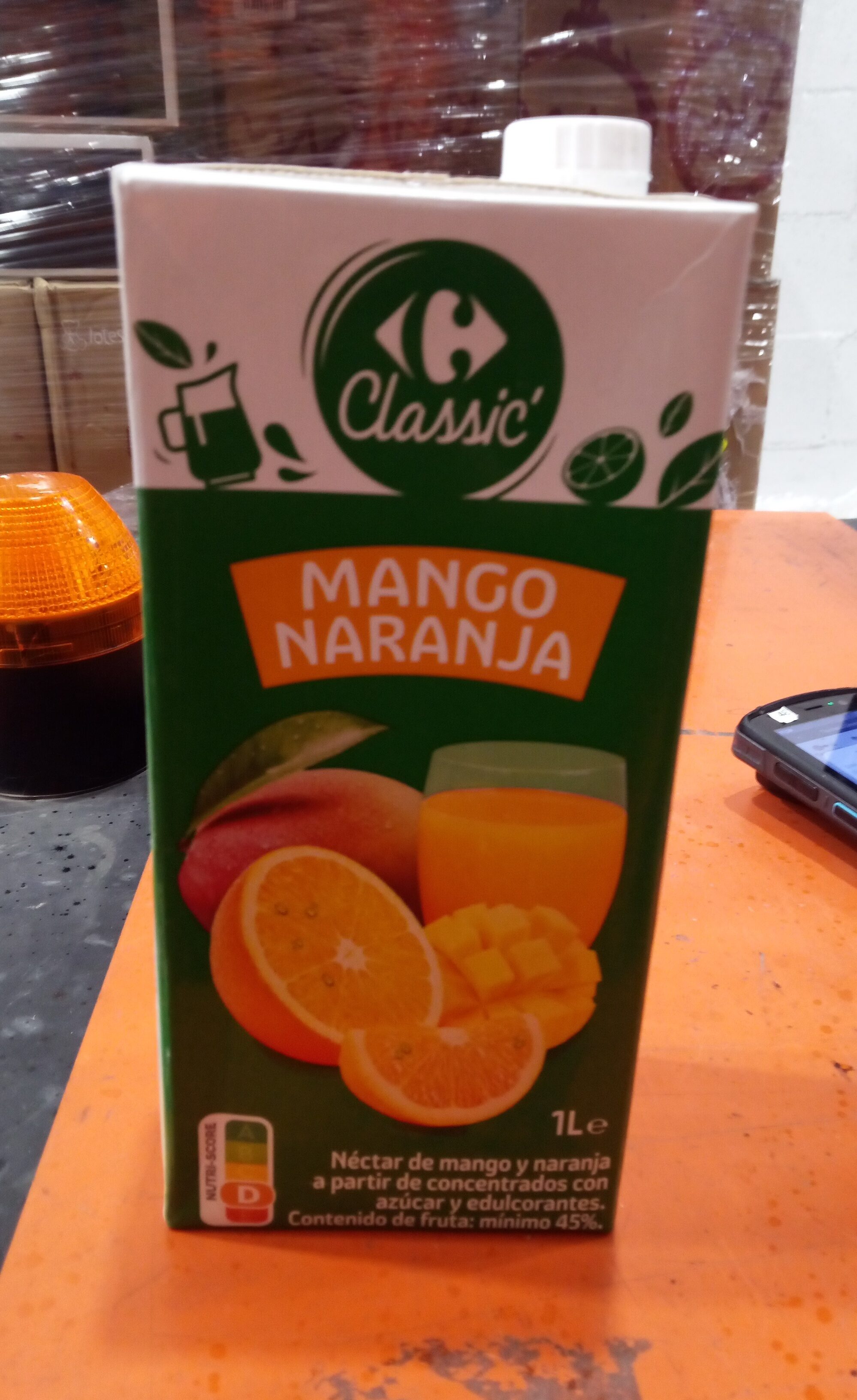Mangue Orange - Carrefour - 1 l
This product page is not complete. You can help to complete it by editing it and adding more data from the photos we have, or by taking more photos using the app for Android or iPhone/iPad. Thank you!
×
Some of the data for this product has been provided directly by the manufacturer Carrefour.
Barcode: 3560070880911 (EAN / EAN-13)
Common name: Nectar de mangue et d'orange à base de concentrés avec sucre et édulcorants. Teneur en fruits : 45% minimum.
Quantity: 1 l
Brands: Carrefour
Categories: Plant-based foods and beverages, Beverages, Plant-based beverages, Fruit-based beverages, Juices and nectars, Fruit nectars, Multifruit nectars
Labels, certifications, awards:
FSC, FSC Mix, Green Dot, Nutriscore, Nutriscore Grade D

Origin of the product and/or its ingredients: Este néctar se fabrica en España con puré de mango a partir de concentrado y zumo de naranja a partir de concentrado procedentes de México y Brasil.
Producer: Fabricado en España por Cofrutos RGSEAA - 21.000409/MU para Interdis - TSA 91431 - 91343 Massy - Cedex - Francia
Traceability code: ES 21.000409/MU CE
Stores: Carrefour
Matching with your preferences
Health
Ingredients
Food processing
Additives
Ingredients analysis
Nutrition
Environment
Carbon footprint
Packaging
Transportation
Other information
Other information: 1Le Fabricado en España
Preparation: Agitez délicatement avant d'ouvrir et servez frais.
Conservation conditions: Avant ouverture, conservez votre nectar à température ambiante, dans un endroit frais et sec, à l'abri de la lumière. Après ouverture, conservez votre brique au réfrigérateur et consommez-la dans les 4 jours. N° de lot / À consommer de préférence avant le : voir sur le dessus de la brique.
Customer service: Interdis - TSA 91431 - 91343 MASSY Cedex - France
Report a problem
Data sources
Product added on by carrefour
Last edit of product page on by 5m4u9.
Product page also edited by ecoscore-impact-estimator, fixbot, foodless, kiliweb, moon-rabbit, org-carrefour, roboto-app, spotter.






